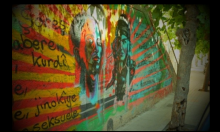
Abstract
This paper seeks to make “racism” strange, by exploring its invocation in the sociolinguistic context of LGBTQI+ activism in Greece, where it is used in ways that may be jarring to anglophone readers. In my ongoing research on the conceptualisation of interwoven oppressions in Greek social movement contexts, I have been interested in understanding how the widespread use of the term “racism” as a superordinate category to reference forms of oppression not only based on “race,” “ethnicity,” and “citizenship” (e.g., racism, nationalism, xenophobia) but also those based on gender, gender identity, and sexuality (e.g., sexism, transphobia, and homophobia) relates to the increased adoption of “intersectionality” in movement discourses. In ordinary parlance, this commonplace usage of “racism” as an “umbrella term” nevertheless retains its etymological link to “race,” while its scope is extended to other regimes of superiority/inferiority or privilege/oppression.
If intersectionality presupposes that oppressions are ontologically multiple and analytically separable, the use of “racism” as an umbrella concept seems to point in the other direction, implying that all forms of oppression originate from a common source, have a similar ontological basis, or generate privilege for the same social agents who deploy similar tactics vis-à-vis oppressed groups. My research examines how intersectionality – widely understood as a multi-axial theory of oppression, which contends that power relations are multiple, distinct, and irreducible to one another, yet converge simultaneously in the experiences of multiply oppressed social groups – relates to the use of “racism” as a struggle concept in Greek, but also in other languages commonly used in Greece, such as Albanian (racizmi) and Arabic (eunsuria).In this paper, I examine how these two vocabularies – of racism and intersectionality – are operative in movement discourses, but also how they shape and are shaped by activists’ perceptions, analyses, and theories of oppression.